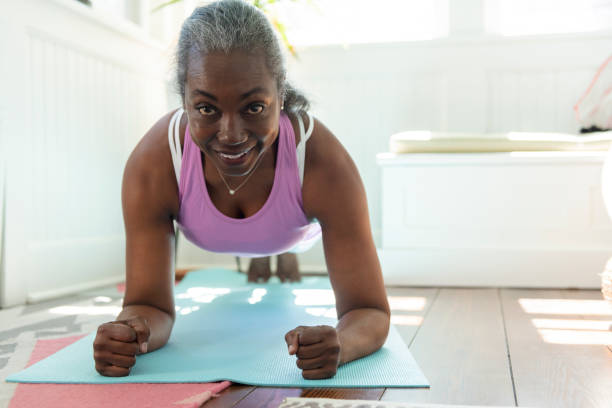
As a woman over the age of 50, I know first-hand how challenging it can be to maintain fitness. For example, my body doesn’t require the same number of calories as it did when I was younger, but I still need to get enough nutrients. There’s no getting around it, as we age, our bodies, minds, and lives change, and so does what we need to maintain fitness.
Healthy eating, regular exercise, and physical activity are the foundation for fitness after 50.
Aging increases the risk of developing chronic diseases but physical activity can delay or prevent many of them, including heart disease, type 2 diabetes, dementia, and some cancers. Being physically active can also improve mental health, help you sleep better, feel better, and maintain the ability to live independently.
When I was younger, my goals for working out were primarily to maintain weight. Now weight maintenance is a secondary goal, and functional fitness is primary.
RELATED: 5 Fitness Excuses You Should Stop Using
Functional fitness is training your body to handle real-life situations. For me, functional fitness means maintaining my balance and not hitting the ground when I trip on an uneven sidewalk. As a frequent flyer, it also means lifting my suitcase into the overhead bin or pulling it off the baggage carousel.
Exercise and physical activity fall into four basic categories—endurance, strength, balance, and flexibility. Regularly including all four types of exercise will give you a wide range of real-life benefits.
Building your endurance makes it easier to carry out many of your everyday activities. Endurance exercises include brisk walking or jogging, yard work (mowing, raking, digging), and dancing.
Strength exercises make your muscles stronger. They may help you stay independent and carry out everyday activities, such as climbing stairs and carrying groceries. These exercises also are called “strength training” or “resistance training.” Strength exercises include: lifting weights, using a resistance band, and using your own body weight.
Having good balance is important for many everyday activities, such as going up and down the stairs, or turning around quickly when you're on a walk and hear a bicycle bell behind you. Many lower-body strength exercises will also improve your balance. Balance exercises include standing on one foot, heel-to-toe walk, and Tai Chi.
Flexibility exercises stretch your muscles and can help your body stay limber. Being flexible gives you more freedom of movement for other exercises as well as for your everyday activities, including driving and getting dressed. Flexibility exercises include shoulder and upper arm stretch, calf stretch, and yoga.
RELATED: 6 Steps To Kick-Start Your Fitness Journey
Aim for a total of 30 minutes of exercise and physical activity at least five days each week, including two days of strength training.
As you age, it's essential to eat a variety of foods to get all the nutrients your body needs for good health without a lot of extra calories. The food you eat should provide the right balance of carbohydrates, protein, fat, vitamins, minerals, fiber, and water. All of these nutrients working together give you the energy you need for a full and productive lifestyle.
Experts suggest seniors need more protein than when they were younger to help maintain muscle mass. Scientific evidence shows that older adults who consume more protein are more likely to maintain functional fitness.
Good sources of protein are lean meat, poultry or fish, cooked beans, eggs, peanut butter, nuts, and seeds. Your health care provider can help you determine how much protein is right for you.
It can be challenging to eat healthier and fit exercise and physical activity into your daily routine.
Believe me, I know. But I also know, living an independent lifestyle is worth the challenge.

Constance Brown-Riggs, is a registered dietitian, certified diabetes educator, national speaker and author of the Diabetes Guide to Enjoying Foods of the World, a convenient guide to help people with diabetes enjoy all the flavors of the world while still following a healthy meal plan. Follow Constance on social media @eatingsoulfully








